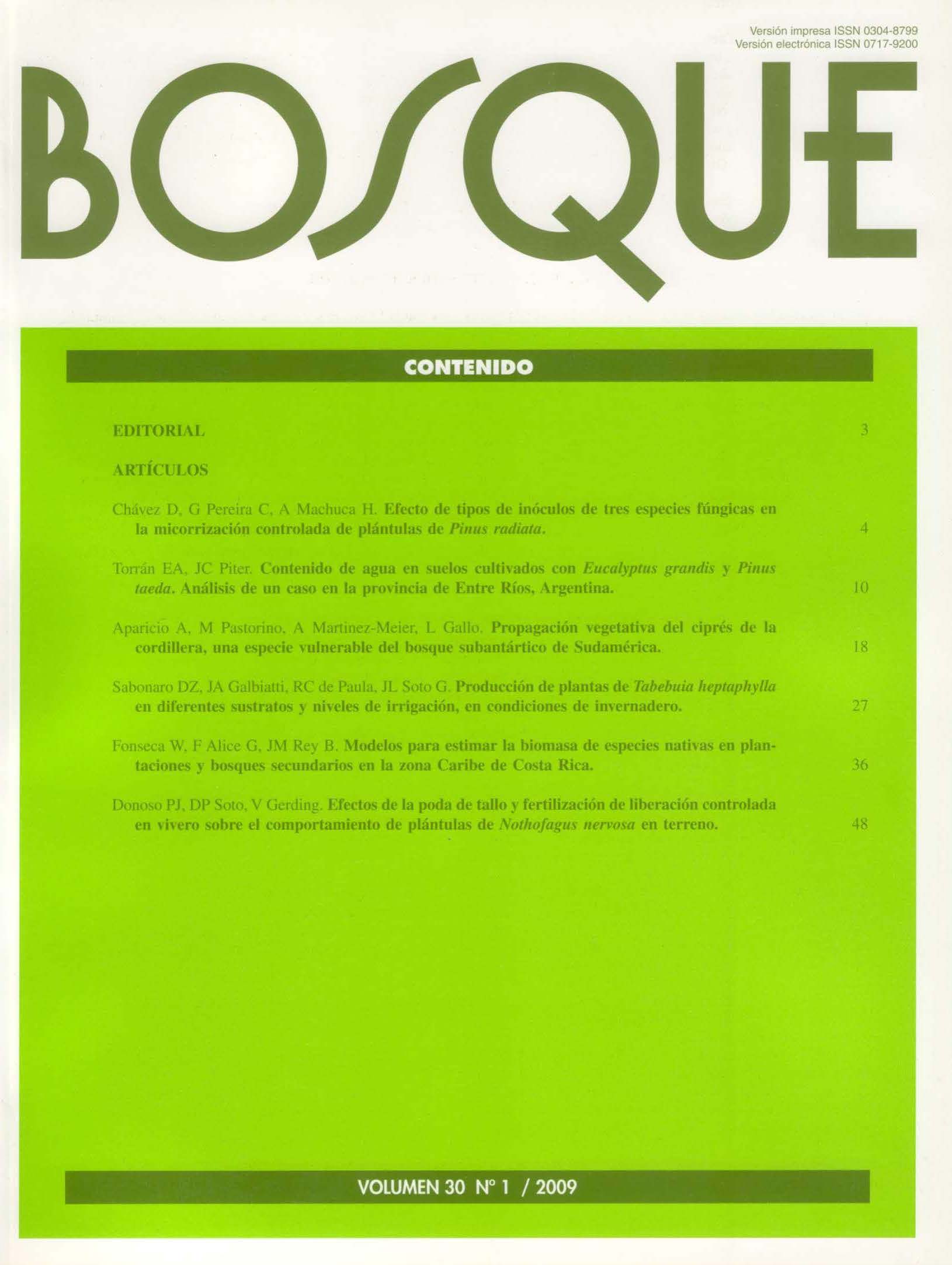Main Article Content
Apr 30, 2009
Abstract
This paper reports the results of an investigation regarding the study of soil water content under a plantation of Eucalyptus grandis and another one of Pinus taeda located in a typical region for the cultivation of these species in Entre Ríos province, Argentina. Soil samples were monthly taken for 12 months up to a nominal depth of 2 m and soil water content was determined by means of the gravimetric method. Samples obtained from the E. grandis plantation exhibited higher water content than those taken from the P. taeda and a significant difference between the corresponding mean values was found. The statistical study also proved that the hypothesis of equal variances for the two groups of values may not be rejected and a detailed analysis showed similar variations when results were analysed as a function of the distance from the plantation border as well as the depth and the period of the year. Soil water content found under the two plantations was lower than the estimated withering point only in few spatially and temporally isolated opportunities.


